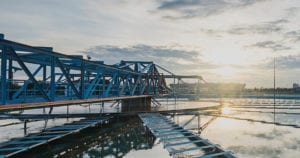In his podcast “Close-coupled Cooling Delivers Big Energy Savings” (which you can listen to on this blog), John Niemann advises anyone running a small or medium sized data center could save about 20% on cooling energy costs by implementing a close-coupled cooling system. If you’re considering implementing, or have implemented a this sort of cooling, then you are not alone. According to a recent study by IMS Research, data center operators are increasingly looking to utilize row/ rack cooling in preference to legacy room cooling solutions.
“The World Market for Data Center Cooling – 2012 Edition,” which can be purchased from IMS Research, says that revenues from rack-level cooling solutions will grow at a CAGR of 12% from 2011 to 2016, accounting for over half a billion USD by 2016. The fastest growing national markets for rack-level cooling equipment are forecasted to grow at CAGR of over 20% over this five-year period.
Andrés Gallardo, an analyst at IMS Research said, “Unlike in the early years of data centers, when the only objective was to maintain general room temperature inside the data center, efficiency has become a major concern for data center operators because of the increasing cost of operating the cooling equipment. Further, this equipment has also become more crucial to a company’s operation; and technology has enabled facilities with increasing densities. For these reasons, the growth of rack-level solutions continues to outpace that of room-cooling products as these products offer efficient cooling for high-density loads.”
Andrés told me that as it stands, the market for row/ rack solutions is roughly $300 million USD, with the US accounting for nearly a third of that. Other large markets are Japan, UK and Germany. He explained, “US data centers have the highest share of row/rack products because the US has the largest number of high density data centers in the world.”
“Row/ rack cooling is most popular in the mature markets, and is becoming an increasingly important supplementary approach to room cooling in high density environments. It is also becoming an option for non-raised floor environments, either as an option for small server rooms, or for high density data centers specifically designed for row/ rack cooling,” he said. Of-course, fans of Neil Rasmussen, Schneider Electric’s legendary Chief Innovation Officer, are probably familiar with the idea of cooling without a raised floor as well as the cost and environmental benefits which follow.
Density has established a long term, upward trend. In its Global Data Center Census 2011, DatacenterDynamics Research quoted an average rack power density around 4.05 kW/ rack throughout the regions it investigated. This sort of density is already at the high edge of the envelope for room cooling to be effective (i.e., avoid “hotspots”). However, globally, DatacenterDynamics recorded that over 40% of installed racks were upward of 5kW/ rack and 14% were over 10 kW/ rack.
There’s good news in this report for those data center operators committed to integrated modular, scalable physical infrastructure solutions. Andrés said, “The main driver for row/ rack products is the increasing density of data centers, because it is more efficient to use a row/ rack product than to increase the flow of air from a CRAC unit to cool down a hot spot. The strongest companies in the rack-level market are not necessarily ones specializing in cooling, but are rather ones specializing in data center infrastructure. They can offer a complete data center package including rack-level cooling. This creates a new level of competition for traditional cooling-only companies.”
“Despite the high growth of rack based cooling,” said Gallardo, “Room cooling will remain the largest part of the market over the next five years as most data center designs still call for room cooling. Moreover, new builds in emerging markets are often lower density and do not require supplemental cooling.” Schneider Electric’s experience in China suggests that many low density data centers cannot be transitioned to the higher density requirements for Cloud infrastructure, and therefore become a barrier to growth for their owners. So is close-coupled cooling and cooling efficiency important? In 2011 total data center power consumption was pegged at around 31 GW, and forecast to grow by 19% during 2012 (see New York Times “Survey Sees Major expansion of World’s Data Centers”, Sept 27th 2011). And we all know that the cooling system consumes the biggest proportion of data center energy…



